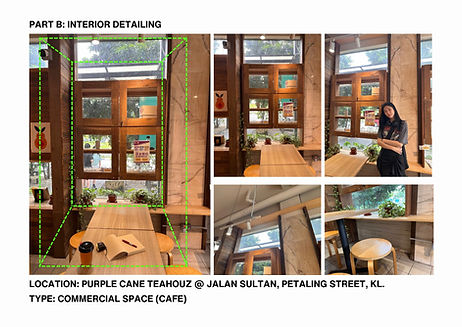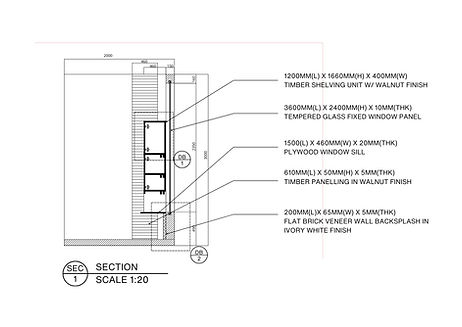Vivianne Yiu
Semester 2
Apr - Aug 2024
A compilation of my Semester 2 Core Module Works
Core Modules
Interior Architecture Design ii | IDS60404
Materials & Finishes | IDS60904
MPU Modules
Social Innovation Project | UCM60303
Emotional Intelligence in Action | UCM60103
Interior Architecture Design ii
Module Synopsis
The module emphasizes on ‘spatial design for human habitation or work’ in interior spaces. Students are introduced to an exploration of design inspiration that is functional, expressive, and considerable to the surrounding environments. The learning and teaching approach for the module will be studio-based, with students engaging with practical tasks during the studio sessions and presenting their ideas and thoughts within the group. There is regular review, feedback and critique sessions leading to the final design review to assess progress and alignment to the learning outcomes in relation to the brief. The module is supported by a combination of online lectures and tutorial sessions. In the preliminary design work, students engage with research on design study which explores the idea of interior architectural tectonics and experiences to develop their understanding on interior spaces, form, and function. The major project involves adapting the expression of ideas and inspiration, adapting multi-functional design in a compact space, exploring colours, incorporating materials and proposing basic interior detailing in the given design project.
01
Project 1
Project 1 of studio ii "Lokal Tukang Komuniti" focused on conducting preliminary studies and research on a local artisan and local delicacies of our choice. The goal of this project is to produce a set of sketches showing our research and exploration, as well as food packinging design for our featured delicacy.
I chose shoe cobbler along with tea egg and Kopi 434 as my choices, which served as my baseline for research in this stage.
I started off the by finding an opportunity to conduct a street interview with a cobbler. I had the fortune of coming across Mr. Zamuluddin, a street cobbler; I observed and analyzed his working process, taking note of the tools and methods of repairing a shoe. This gave me a great insight on how to design a suitable working space for a shoe cobbler.
Next, I also conducted online research on how to cook tea eggs, and trying out the recipe for myself to better understand the process itself.
After collecting all the information, I did a visual journal sketch containing information on my research and studies, along with exploration on a concept of my food packaging design as well as some spatial concept ideas.



Materials & Finishes
Module Synopsis
The module emphasizes interior materials and finishes in interior design and architecture. Students are introduced to interior detailing and material associated technologies, installation, detailing, construction methods and specification writing. Students will learn and explore various methods of interior construction detailing and its potential applications. A variety of materials such as timber, glass, metal, concrete, plastering, bricks, synthetic and fabric finishes are introduced. Students will be encouraged to develop the ability to source and identify suitable materials and finishes as well as develop an understanding of their application.
The learning and teaching approach for the module will be guided learning coupled with authentic learning, with students introduced to properties and technologies associated to material finishes and furnishings used in interior design during lecture followed by students engaging in group discussion and exploration of the characteristics of conventional and current materials during the tutorial sessions. Each groups collective ideas will then be presented at a joint feedback and review session at the end of the tutorial, where the lecturer will further elaborate on any gaps and/or clarify any points raised by students from the topic of the week. Each student shall summarize these extra insights into their lecture notes as some of this freshly acquired knowledge may be tested directly or indirectly in the 2 tests and/or applied indirectly to assignment/s. The learning from the group discussions is applied to the individual assessments. Hence, each individual student level of participation and engagement in groupwork will indirectly be assessed through the individual assessment components.
The assessments of the module comprise of four (4) components, one (1) individual assignment, two (2) tests and one (1) individual Final Integrated Assignment (integrated with IAD module).
01
Project 1 : Interior Finishes and Detailing
Project 1 of Materials and Finishes explores on finishes and detailing. The project has 2 parts, the first being picking a furniture to conduct detailed manual drawings for. The second part focuses on doing an interior detailing of a built-in furniture from a section of a commercial space of our choice.

.jpg)
Technical pen on A4 cold pressed paper.
.jpg)
.jpg)
Section Drawing done on AutoCAD.
View the full project here!



.jpg)
